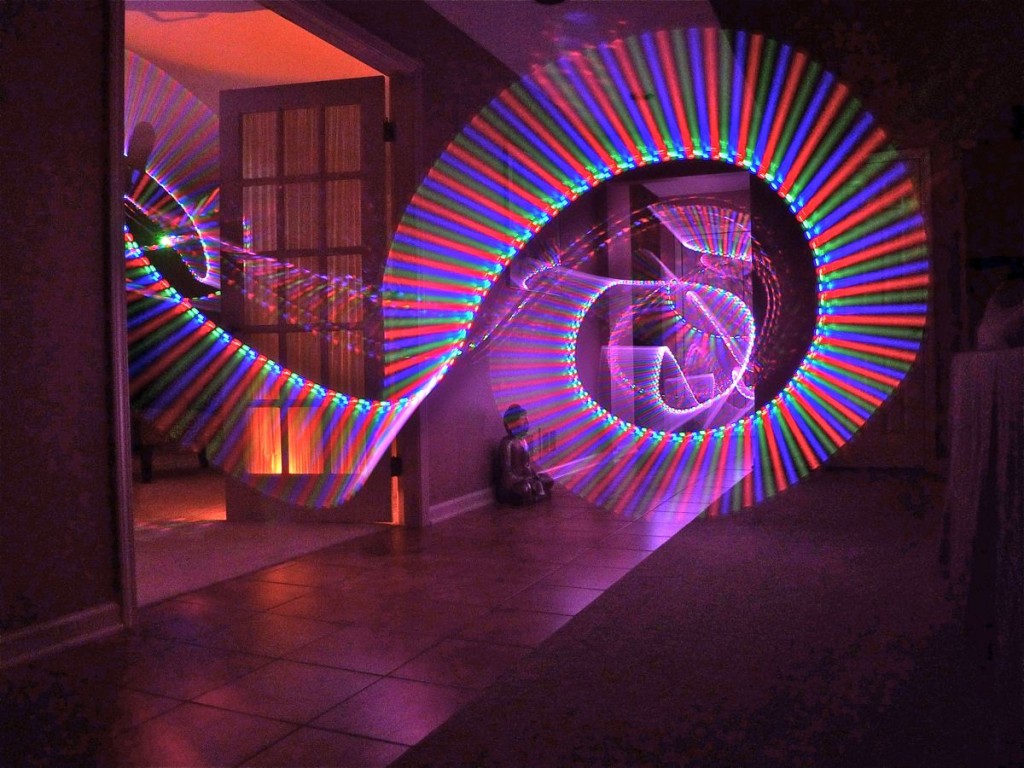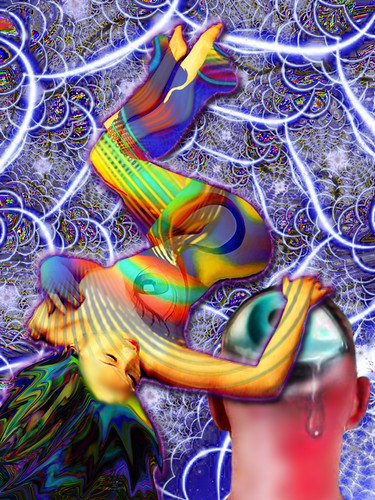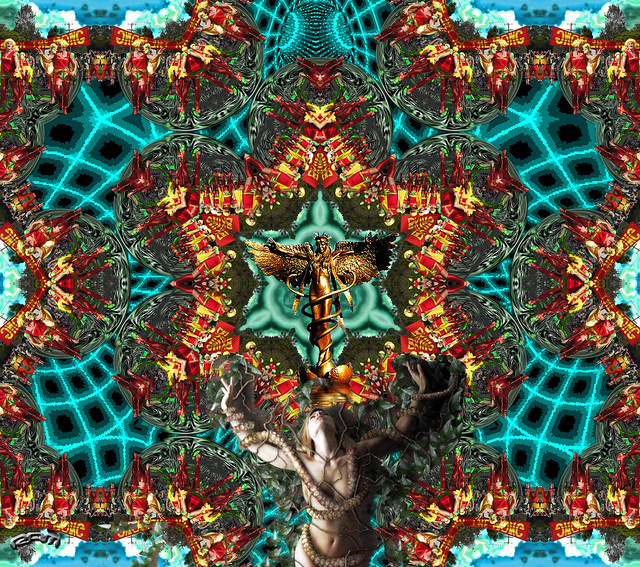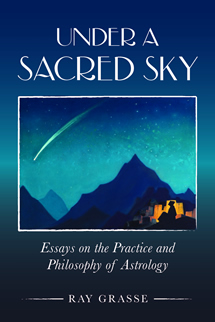Synchronicity and the 'Mind of God':
Unlocking the Mystery of Carl
Jung’s “Meaningful Coincidence”

“Those who believe that the world of being is
governed by luck or chance and that it depends upon material causes are far
removed from the divine and from the notion of the One.”
–
Plotinus,
Ennead VI.9
While preparing for his role in the 1939 film The Wizard of Oz, actor Frank Morgan decided against using the costume offered him by the studio for his role as the traveling salesman Professor Marvel, opting instead to select his own wardrobe for the part. Searching through the racks of second-hand clothes assembled over the years by the MGM wardrobe department, he finally settled on an old frock coat that eventually served as his costume during the movie’s filming.
Passing the time one day, Morgan idly turned out the inside of the coat’s pocket only to discover the name “L. Frank Baum” sewn into the jacket’s lining. As later investigation confirmed, the jacket had originally been designed for the creator of the Oz story, L. Frank Baum, and made its way through the years into the collection of clothing on the MGM backlot.
Most of us have, at some point or another, experienced certain unusual coincidences so startling they compel us to wonder about their possible significance or purpose. Do these strange occurrences hold some deeper meaning for our lives? Or are they simply chance events, explainable through ordinary laws of probability, as most scientists claim?
Among those who wrestled with these questions was the famed Swiss psychologist Carl Jung. Having experienced many such uncanny events himself, he coined the term synchronicity to describe the phenomenon of “meaningful coincidence.” Whereas some coincidences were indeed without significance, he wrote, every so often there occurred confluences of circumstance so improbable they hinted at a deeper purpose or design in their unfolding. 1
To explain such phenomena, he theorized the existence of a principle in nature very different from that normally described by conventional physics. Whereas most visible phenomena in the world seem to be related in a cause-and-effect manner, like billiard balls bouncing into one another, synchronistic events appear to be “acausally” related, as though linked by an underlying pattern rather than by direct, linear forces.
For instance, the presence of Baum’s coat on the film wasn’t caused by the making of the film, nor did the appearance of the coat somehow cause the making of the film; they simply were dual expressions of the same unfolding matrix of meaning. Jung went on to postulate two primary kinds of acausal relationships: between two or more outer events in one’s life (as in the case of Frank Morgan), or between an outer event and an inner psychological state.
Since it was first published in 1952, Jung’s concept has increasingly filtered into popular culture, having found its way into the plot lines of TV shows, works of pop-fiction like The Celestine Prophecy, and the lyrics of rock groups like The Police. In more scholarly quarters, there have been attempts to shed light on this theory through classifying various types of coincidence, scrutinizing it in terms of statistical studies, or even explaining it through quantum physics.
The search continues. In a letter to the late Victor Mansfield, Jungian disciple Marie-Louise von Franz wrote towards the end of her life:
The work which has now to be done is to work out the concept of synchronicity. I don’t know the people who will continue it. They must exist, but I don’t know where they are. 2
So what, ultimately, is the message of synchronicity, and how shall we best unlock its significance?
What I’d like to suggest here is the possibility that understanding synchronicity may require nothing less than a radically different cosmology than we’re accustomed to, one with roots in a very ancient way of thinking–and one in which Jung’s “meaningful coincidence” actually plays only a small part. Let me explain.
Most of us are familiar with the well-known parable of the blind men and the elephant. According to the story, a group of sightless men come across a great elephant, and each one tries to determine its nature from their own limited perspective. For the man grasping only its trunk, it seems to be a large snake, while for another, feeling only its leg, it’s more like the trunk of a tree, and so on. Because of their partial and limited vantage points, none is able to grasp the true nature of the creature, since that can properly be understood only from a larger, more global perspective.
In much the same way, I’d suggest that by focusing our attention primarily on isolated coincidences we are only witnessing one small facet of a much larger reality, one with many different expressions and dimensions. Unlocking the true significance of Jung’s theory thus requires that we step back and attempt to grasp the broader perspective of which synchronistic events are only a facet.
The
Symbolist Worldview
What, then, is that “broader perspective”? It’s what I’ll here call the symbolist worldview – a perennial perspective espoused through the centuries by such diverse figures as Plotinus, Pythagoras, Jacob Boehme, Ralph Waldo Emerson, and Cornelius Agrippa, to name just a few. For these and other figures, the world was seen as infused with meaning, as “saying” something. As the Swedish scientist and mystic Emmanuel Swedenborg wrote in Heaven and Hell, “There is a correspondence of all things of heaven with all things of man.” 3 The universe is a reflection of an underlying spiritual reality; all phenomena express the deeper ideas and principles of which they are a “signature,” and can therefore be deciphered for their subtler significance.
For the symbolist, all events and phenomena are seen as elements of a supremely ordered whole. Like the intricately arranged threads of a great novel or myth, the elements of daily experience are viewed as intimately interrelated, with no event out of place, no situation accidental. Consequently even a seemingly trivial occurrence can serve as an important key toward unlocking a greater pattern of meaning: the passage of a bird through the sky, the appearance of lightning at a critical moment, or the overhearing of a chance remark – such events are deemed significant because they’re perceived as interwoven within a greater tapestry of relationship.
Pervading the warp and weft of creation is a web of subtle connections sometimes known as correspondences. The American essayist Ralph Waldo Emerson once said:
“Secret analogies tie together the remotest parts of Nature, as the atmosphere of a summer morning is filled with innumerable gossamer threads running in every direction, revealed by the beams of the rising sun.” 4
Using more contemporary terms, these correspondences could well be described as “acausal” connections, since they’re not based on mechanistic forces of cause-and-effect, like our proverbial billiard balls on the pool table, but on principles of analogy, metaphor, and symbolism.
For example, whereas scientists view the Moon as a material body with certain measurable properties, such as size, mineral composition, and orbital motion, among others, for the esotericist the Moon may also be related to such things as water, women, the home, food, and emotions, since these all linked through an underlying “lunar” archetype, or what might be called the principle of receptivity. Understanding the language of correspondences thus provides the esotericist with a skeleton key toward unlocking the hidden connections which unite the outer and inner worlds of our experience.
Since the advent of scientific rationality in the 17th and 18th centuries, the concept of correspondences has been dismissed by scientists as nothing more than an outmoded metaphysical fiction, comparable to a child’s belief in Santa Claus or the tooth fairy. Yet as soon becomes obvious to anyone studying astrology for any length of time, such correspondences are actually quite real and not merely the stuff of overactive imaginations.
Consequently, when the Moon is stressfully activated in a person’s horoscope, they may experience a rash of problems in their dealings with women, say; or when Jupiter crosses over their Venus, they might suddenly experience a run of good luck in matters involving romance or money – and so on. Ultimately, the horoscope provides a complex map of the symbolic correspondences that weave their way throughout a person’s life, in ways that are both testable and repeatable.
The
Implications for Jung’s Synchronicity
 So how does
the symbolist perspective force us to rethink Jung’s synchronicity theory? For one, in his
formal writings on the subject Jung claimed that synchronicity was a
“relatively rare” phenomenon. 5
So how does
the symbolist perspective force us to rethink Jung’s synchronicity theory? For one, in his
formal writings on the subject Jung claimed that synchronicity was a
“relatively rare” phenomenon. 5 But for the symbolist, coincidence is just the tip of a far greater iceberg of meaning, the most visible feature of a pervasive framework of design and relationships that undergirds all experience. In a sense, the entire world is a vast matrix of “acausal connections” extending to every aspect of one’s experience, from one’s body and thoughts to every event and object in the environment. Said another way, everything is a “coincidence,” insofar as everything co-incides!
Jung regarded the synchronistic event as an important “eruption of meaning” in our lives. But as divinatory systems like astrology demonstrate (and as I explore more fully in The Waking Dream 6), there are actually many eruptions of meaning in our lives besides the occasional and remarkable coincidence, many of them equally important – marriages, births, deaths, graduations, job changes, chance encounters, accidents, nightly dreams, and many others. All these and more are “synchronistic” insofar as they correspond in acausal and meaningful ways to other unfolding patterns in one’s life. 7
To borrow a phrase from William Irwin Thompson, we are like flies crawling across the ceiling of the Sistine Chapel, unaware of the complex archetypal drama spread out before us; what the infrequent and dramatic coincidence does is pull back the curtain for us on one small portion of that vast tableau of meaning.
For that reason, uncovering the truth of synchronicity won’t be had through scientific methodologies or by carefully studying individual coincidences, but only through a broader philosophical inquiry into the symbolic nature of existence itself. As a result, unlocking Jung’s “meaningful coincidence” may ultimately require a “unified field” theory of meaning that incorporates such diverse disciplines as sacred geometry, astrology, the theory of correspondences, chakric psychology, number theory, and a multi-leveled cosmology, to name just a few. Only within the broad framework offered by just such a Sacred Science can we hope to truly grasp the “whole elephant” of synchronicity, and not simply one of its appendages, as exemplified by the rare and dramatic coincidence.
And it’s against this broader backdrop that we begin to glimpse some of the broader questions raised by synchronistic phenomena, such as: What could possibly organize the phenomena of our world in so profound and meaningful a way as this? In his book A Sense of the Cosmos, author Jacob Needleman offers a possible clue to that question with this comment about the uncanny symmetry displayed throughout nature’s ecological web:
“Whenever we have looked to a part for the sake of understanding the whole, we have eventually found that the part is a living component of the whole. In a universe without a visible center, biology presents a reality in which the existence of a center is everywhere implied.” (emphasis mine) 8
Needleman’s comments here could be read as a useful analogy for understanding synchronicity, too. In order for the diverse events of our lives to be interwoven as intricately and artfully as synchronicity implies, and as systems like astrology empirically demonstrate, there would seem to be a regulating intelligence underlying our world, a central principle that organizes all of its elements like notes in a grand symphony of meaning. One needn’t think of this as involving a bearded, anthropomorphic deity on a heavenly throne somewhere, of course. As we saw at the opening of this article, the Neoplatonist writer Plotinus referred to this transcendent principle as simply “the One,” while the Buddhists speak of “Big Mind,” and the mystic geometers of old described a circle whose “center was everywhere but whose circumference was nowhere.”
Whatever labels or terms one chooses, the phenomenon of synchronicity hints at a coordinating agency of unimaginable scope and subtlety whereby all the coincidences and correspondences of the world coalesce as if threads in a grand design, and within which our lives are holoscopically nested. Seen in this way, the synchronistic event can be seen as affording us a passing sideways glance, as if through a glass darkly, into the mind of God.
Notes
1. Jung, Carl. “Synchronicity: An Acausal Connecting Principle,” in The Structure and Dynamics of the Psyche, Vol. 8, Collected Works. Princeton, NJ: Bollingen Series, Princeton University Press.
2. Quoted by Richard Tarnas, in Cosmos and Psyche. New York, Penquin Group, 2006, pp. 50-60.
3. Swedenborg, Emmanuel. Heaven and Its Wonders and Hell. New York: Swedenborg Foundation Incorporated, 1935.
4. Emerson, Ralph Waldo. The Complete Writings, Vol. II. New York: William H. Wise, 1929, p. 949.
5. The question as to the true frequency of synchronistic phenomena was a matter of debate even during Jung’s lifetime, and at one point became a bone of contention between Jung and his colleague, the Swiss analyst C.A. Meier. Meier pointed out that if synchronicity is indeed a phenomenon at “right angles” to causality, as Jung claimed, then by definition it must manifest as commonly in our lives as does causality, not simply as an occasional feature. Conceding that point, Jung added a footnote in his book’s second edition to that effect – failing, however, to credit Meier for clarifying that point for him. On being angrily confronted by Meier for this oversight, Jung modified the footnote (number 70) to include Meier’s contribution, which in subsequent editions has read, “I must again stress the possibility that the relationship between body and soul may yet be understood as a synchronistic one. Should this conjecture ever be proved, my present view that synchronicity is a relatively rare phenomenon would have to be corrected.” (Italics mine – R.G.)
6. Grasse, Ray. The Waking Dream: Unlocking the Symbolic Language of Our Lives. Wheaton, IL: Quest Books, 1996.
7. The frequency of synchronistic phenomena is just one of several ways the symbolist perspective forces a revision of Jung’s theory, but there are others. For example, Jung regarded synchronicities as fundamentally personal phenomena, as arising out of the psycho-spiritual dynamics of a person’s relationship with their world; yet the sheer pervasiveness of correspondences in our world, as demonstrated by astrology, for example, implies that synchronicity extends to the collective and universal levels as well. For example, one finds meaningful correspondences operating through history on a socio-cultural level as well, involving situations which extend far beyond the personal sphere – and indeed, the universe itself seems founded on the principle of correspondences, upon acausal connections of many types.
Also, Jung emphasized the element of simultaneity as a distinguishing feature of synchronistic events – i.e., coincidences occurring within the same moment in time, such as getting a phone call from an old friend just as you stumble across an old photo of them in your attic. Yet as both the symbolist perspective and Jung’s predecessor in the study of coincidence, the Austrian biologist Paul Kammerer, argued, synchronistic phenomena can also involve sequential coincidences – e.g., such as coming across the same obscure literary reference several times over the course of a day. In short, synchronicity operates across all directions of time – forward, backward, and simultaneous.
Thirdly, Jung stated emphatically that synchronistic (and archetypal) events cannot be predicted beforehand. While that may be true in terms of their specific forms, astrology clearly shows it’s possible to predict archetypal patterns of meaning in more general ways, far in advance of their happening. For example, we might look at someone’s horoscope and see that Jupiter will soon be coming up to align with their Uranus, which strongly suggests they could experience lucky connections, coincidences, or opportunities at that point. While we can’t say precisely how those events will manifest, the underlying archetypal energy itself is foreseeable.
8. Needleman, Jacob. A Sense of the Cosmos: The Encounter of Modern Science and Ancient Truth. E.P. Dutton & Co., Inc., 1975, p. 64.
Under A Sacred Sky: Essays on the Philosophy and Practice of Astrology, recently published by The Wessex Astrologer
From Reality
Sandwich @ http://realitysandwich.com/319343/synchronicity-and-the-mind-of-god-unlocking-the-mystery-of-carl-jungs-meaningful-coincidence/
For more information about synchronicity see http://nexusilluminati.blogspot.com/search/label/synchronicity
- Scroll down
through ‘Older Posts’ at the end of each section
Hope you like this
not for profit site -
It takes hours of work every day by
a genuinely incapacitated invalid to maintain, write, edit, research,
illustrate and publish this website from a tiny cabin in a remote forest
Like what we do? Please give anything
you can -
Contribute any amount and receive at
least one New Illuminati eBook!
(You can use a card
securely if you don’t use Paypal)
Please click below -
Spare Bitcoin
change?
Xtra Images by R. Ayana – https://c2.staticflickr.com/8/7067/6809790414_2643f0489c_k.jpg
For further enlightening
information enter a word or phrase into the random synchronistic search box @
the top left of http://nexusilluminati.blogspot.com
And see
New Illuminati – http://nexusilluminati.blogspot.com
New Illuminati on Facebook - https://www.facebook.com/the.new.illuminati
New Illuminati Youtube Channel - https://www.youtube.com/user/newilluminati/playlists
New Illuminati’s OWN Youtube Videos
-
New Illuminati on Google+ @ For
New Illuminati posts - https://plus.google.com/u/0/+RamAyana0/posts
New Illuminati on Twitter @ www.twitter.com/new_illuminati
New Illuminations –Art(icles) by
R. Ayana @ http://newilluminations.blogspot.com
The Her(m)etic Hermit - http://hermetic.blog.com
DISGRUNTLED SITE ADMINS PLEASE NOTE –
We provide
a live link to your original material on your site (and links via social
networking services) - which raises your ranking on search engines and helps
spread your info further!
This site
is published under Creative Commons (Attribution) CopyRIGHT (unless an
individual article or other item is declared otherwise by the copyright
holder). Reproduction for non-profit use is permitted & encouraged - if you
give attribution to the work & author and include all links in the original
(along with this or a similar notice).
Feel free
to make non-commercial hard (printed) or software copies or mirror sites - you
never know how long something will stay glued to the web – but remember
attribution!
If you
like what you see, please send a donation (no amount is too small or too large)
or leave a comment – and thanks for reading this far…
Live long
and prosper! Together we can create the best of all possible worlds…
From the New Illuminati – http://nexusilluminati.blogspot.com


Did you not receive your pesco bill for this month? What are you supposed to do now if not get your electricity bill? Don't worry about it and you don't have to pay any additional charges even if you've not received the payment. You can view the duplicate bill on the official website of Pesco and take it to print.
ReplyDeleteYou may be surprised to learn that beautiful sculptures and furniture are created using table saws that are portable. The style of decoration is largely dependent on the artist. But, portable Table Saws provide decorative and elegant options. Table saws for portable use aren't necessarily the top choice for woodworking that is fine. Although it's understandable, it's also a big error. Table saws that are portable can be used with power, accuracy and ability to create exquisite woodworking. Today, we've got some tips to look through. Once you've got the best table saw that you can carry around that you have, you will be able to complete many more tasks! Learn more.
ReplyDeletentc duplicate bill
ReplyDeletewasa online bill
www.sngpl.com.pk bill